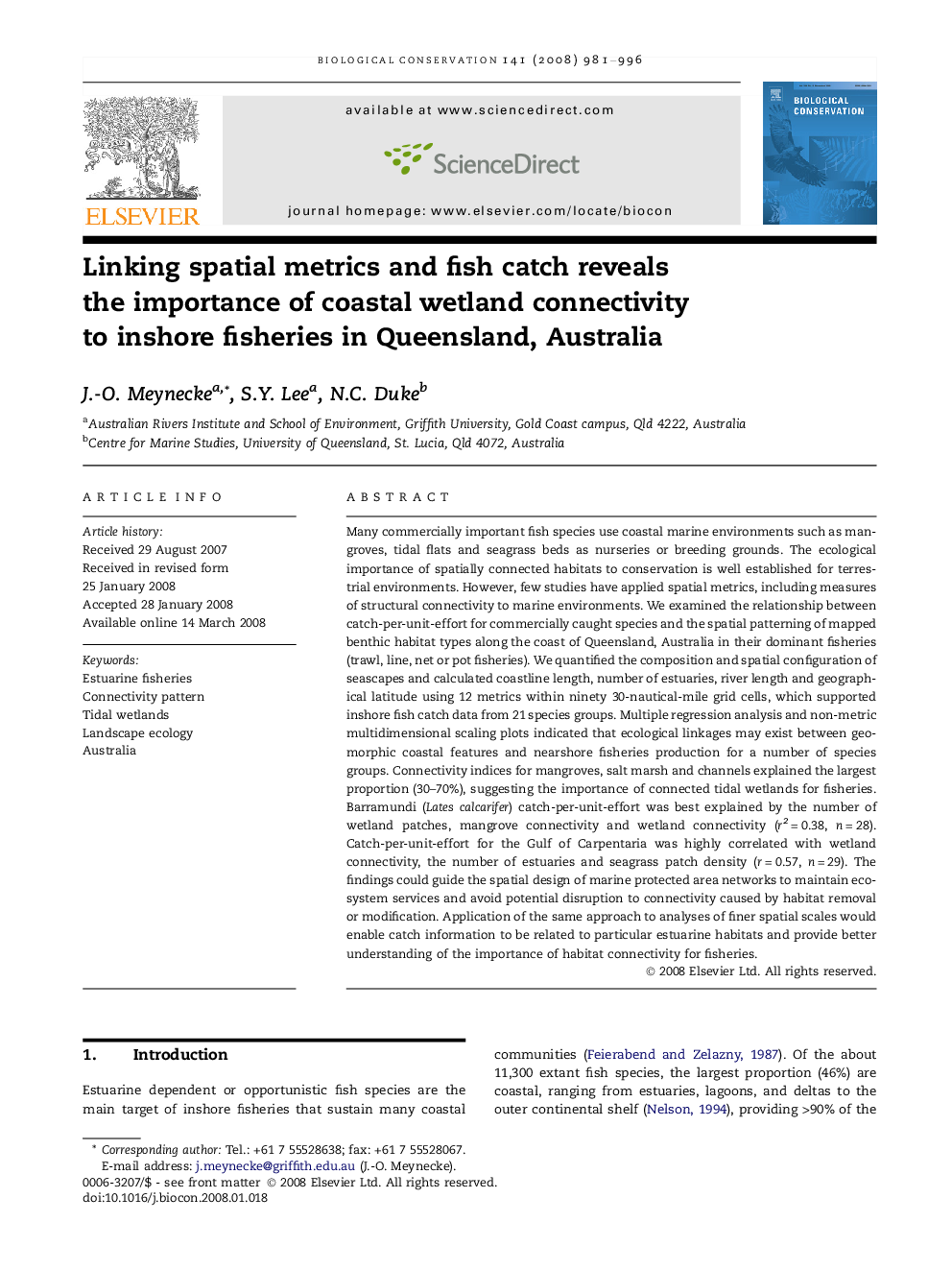| کد مقاله | کد نشریه | سال انتشار | مقاله انگلیسی | نسخه تمام متن |
|---|---|---|---|---|
| 4386691 | 1304575 | 2008 | 16 صفحه PDF | دانلود رایگان |
عنوان انگلیسی مقاله ISI
Linking spatial metrics and fish catch reveals the importance of coastal wetland connectivity to inshore fisheries in Queensland, Australia
دانلود مقاله + سفارش ترجمه
دانلود مقاله ISI انگلیسی
رایگان برای ایرانیان
کلمات کلیدی
موضوعات مرتبط
علوم زیستی و بیوفناوری
علوم کشاورزی و بیولوژیک
بوم شناسی، تکامل، رفتار و سامانه شناسی
پیش نمایش صفحه اول مقاله

چکیده انگلیسی
Many commercially important fish species use coastal marine environments such as mangroves, tidal flats and seagrass beds as nurseries or breeding grounds. The ecological importance of spatially connected habitats to conservation is well established for terrestrial environments. However, few studies have applied spatial metrics, including measures of structural connectivity to marine environments. We examined the relationship between catch-per-unit-effort for commercially caught species and the spatial patterning of mapped benthic habitat types along the coast of Queensland, Australia in their dominant fisheries (trawl, line, net or pot fisheries). We quantified the composition and spatial configuration of seascapes and calculated coastline length, number of estuaries, river length and geographical latitude using 12 metrics within ninety 30-nautical-mile grid cells, which supported inshore fish catch data from 21 species groups. Multiple regression analysis and non-metric multidimensional scaling plots indicated that ecological linkages may exist between geomorphic coastal features and nearshore fisheries production for a number of species groups. Connectivity indices for mangroves, salt marsh and channels explained the largest proportion (30-70%), suggesting the importance of connected tidal wetlands for fisheries. Barramundi (Lates calcarifer) catch-per-unit-effort was best explained by the number of wetland patches, mangrove connectivity and wetland connectivity (r2 = 0.38, n = 28). Catch-per-unit-effort for the Gulf of Carpentaria was highly correlated with wetland connectivity, the number of estuaries and seagrass patch density (r = 0.57, n = 29). The findings could guide the spatial design of marine protected area networks to maintain ecosystem services and avoid potential disruption to connectivity caused by habitat removal or modification. Application of the same approach to analyses of finer spatial scales would enable catch information to be related to particular estuarine habitats and provide better understanding of the importance of habitat connectivity for fisheries.
ناشر
Database: Elsevier - ScienceDirect (ساینس دایرکت)
Journal: Biological Conservation - Volume 141, Issue 4, April 2008, Pages 981-996
Journal: Biological Conservation - Volume 141, Issue 4, April 2008, Pages 981-996
نویسندگان
J.-O. Meynecke, S.Y. Lee, N.C. Duke,